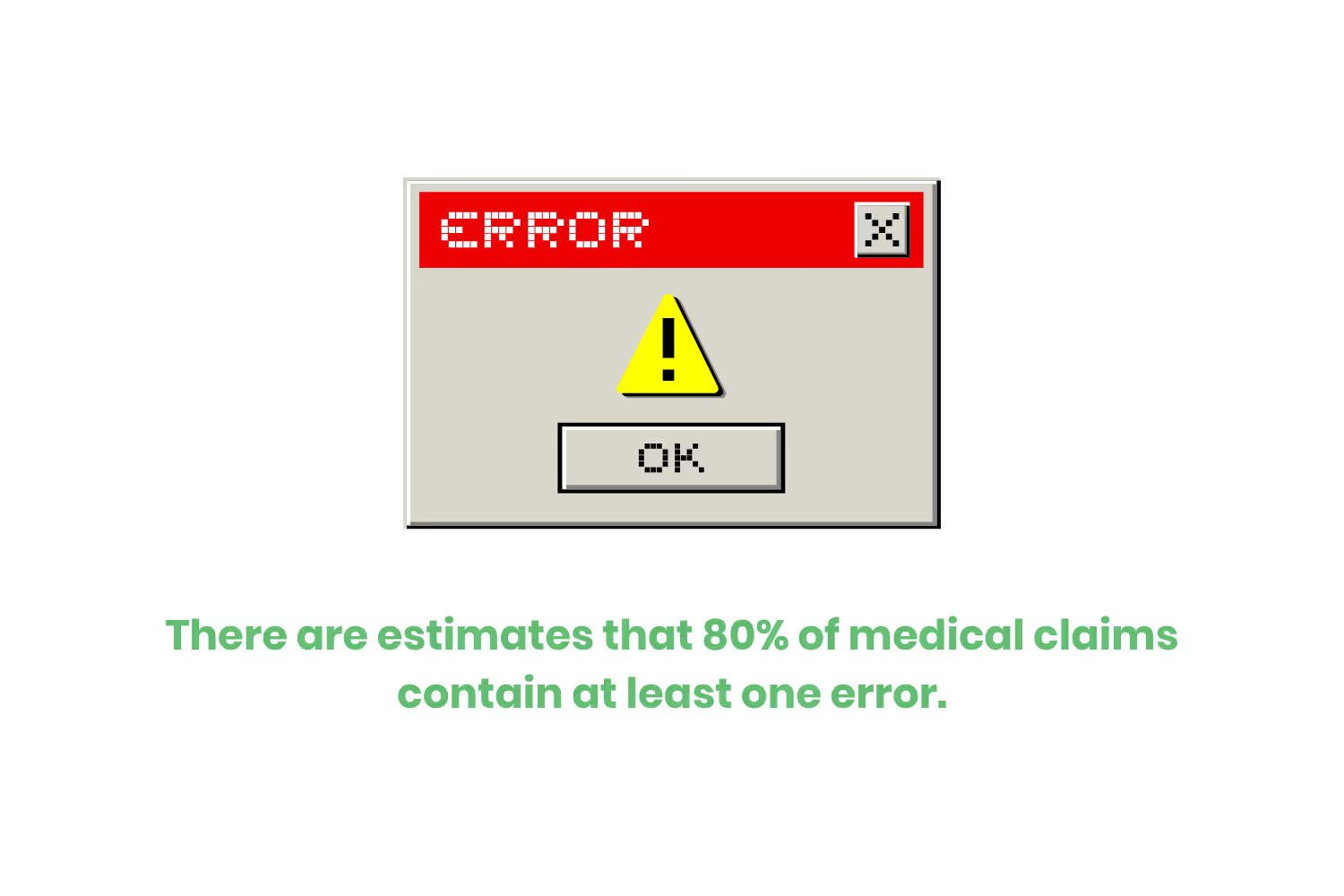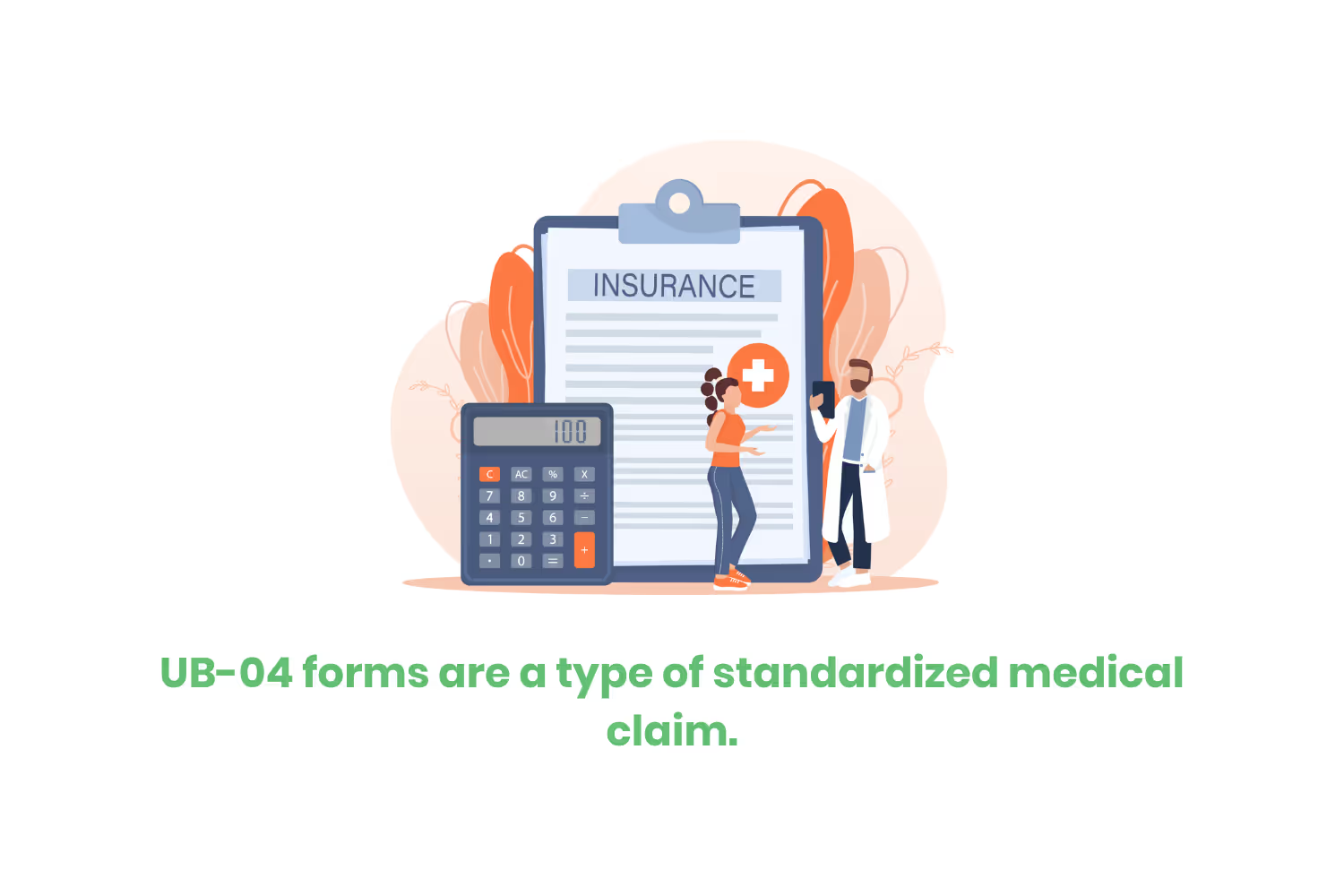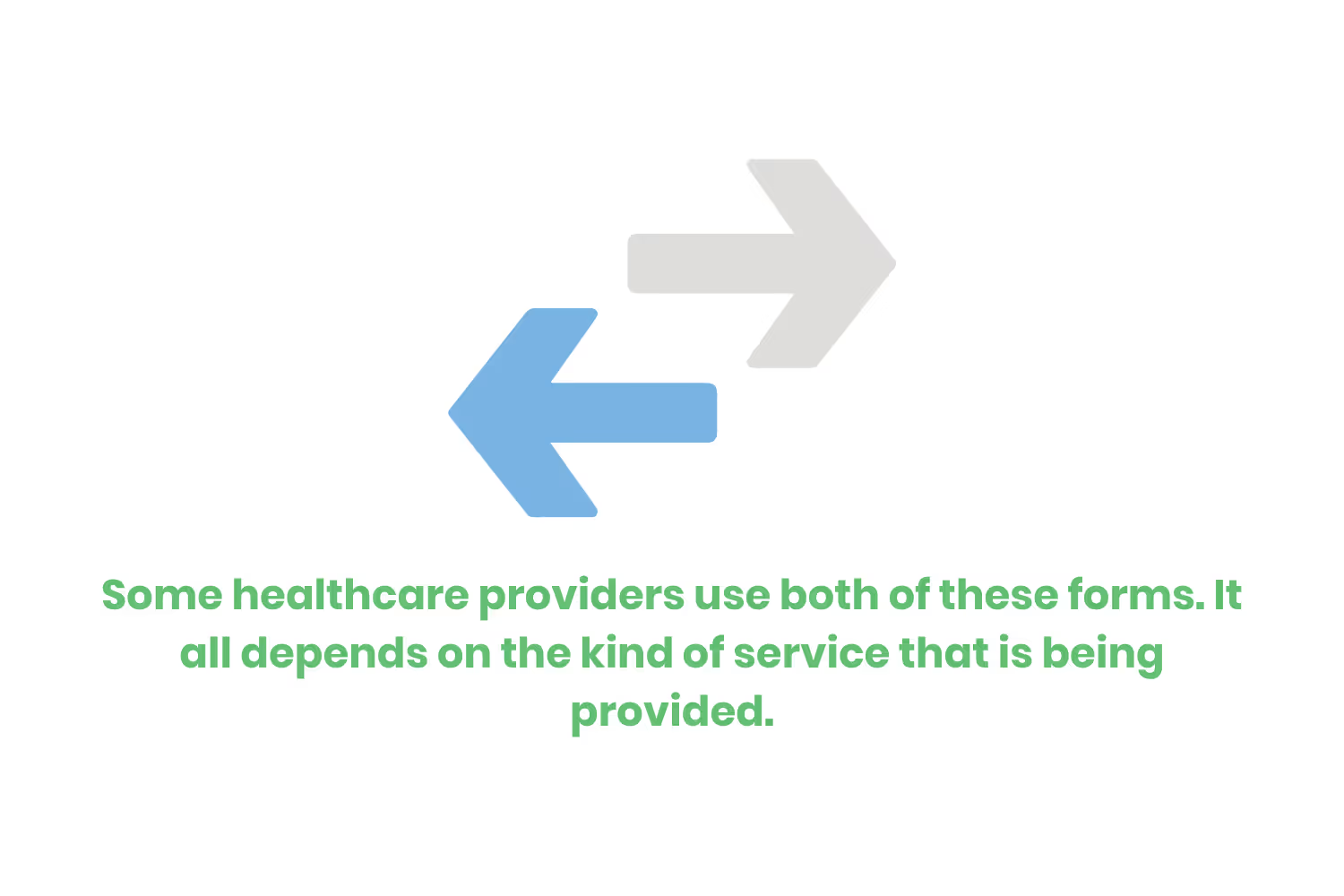[ANSWERED] What is a UB 04 form used for?
In this blog we take a look at what these forms are, why they are important, and how they differ from similar billing forms. Let’s get started!

According to recent data, there are estimates that 80% of medical claims contain at least one error. As a healthcare organization, ensuring you avoid claim errors is essential. These mistakes can prolong the time before you receive reimbursement for services you render to patients. Better known by medical billers as claim denials, having a couple here and there might not seem like a big deal. However, allowing them to slide by and not becoming proactive in preventing them can lead to an eventual overflow of the same problems. Thus, bogging down your staff and causing a bottleneck in your revenue cycle.
Having a smooth revenue cycle management (RCM) system is the name of the game. It is the difference between collecting profits on time and waiting weeks for a payment. That waiting period might even take months in more extreme cases. That is why training and education are vital. Teaching your staff to be proactive, as I mentioned before, can save you from spending time and money cleaning up an otherwise avoidable mess.

Although, billing practices differ between different kinds of providers. For instance, hospitals might bill certain services differently than primary care providers. Instances of not understanding the difference between the two billing practices are likely to result in lost revenue. A recent study found that mistakes on hospital bills cost them approximately $68 billion annually!
One example of differentiating factors between billing practices lies in UB-04 forms. Today we are going to take a look at what these forms are, why they are important, and how they differ from similar billing forms. Let’s get started!
What are UB-04 Forms?
UB-04 forms are a type of standardized medical claim. These claims are the pinnacle of the billing process for institutional healthcare providers. Healthcare institutional providers include the following:
- Hospitals.
- Nursing homes.
- Rehabilitation centers.
- Skilled nursing facilities.
- Hospice facilities.
- Community mental health centers.
- End-stage renal disease facilities.
- Outpatient physical therapy services.
- Rural health clinics.

These forms offer further information to payers as to what services a patient receives. As well as information on the patient and the providers involved. These forms are also known as the CMS 1450 form. This is because the form receives maintenance from the Centers for Medicare and Medicaid Services (CMS). Although developed first by the CMS, it is now used by all insurance companies.
The details and information recorded on this form help providers collect their payments in a timely manner. There is some confusion which can mess with the effectiveness of the UB-04 form. Many medical billers get this form confused with another CMS form, CMS 1500.
CMS 1500 Form
So what is a CMS 1500 form? As I mentioned, it is very similar to a UB-04 form. This is why it can get kind of confusing for medical billers when differentiating between them. It is a CMS-developed form that also includes information about the patient, provider, and details on services provided.
The biggest difference is that the CMS 1500 form is specific to providers that provide individual healthcare services.

These providers might include:
- Physicians.
- Therapists.
- Midwives.
- Dentist.
- Nurse Practitioner.
Individual provider billing has unique requirements when it comes to billing. These include diagnosis codes as well as procedure codes. CMS 1500 forms accommodate space for these details that are specific to individual provider billing. When discussing UB-04 forms, always keep in mind the similarities and differences between them and CMS 1500.
The Difference Between Ub-04 and CMS 1500 Forms
Some healthcare providers use both of these forms. It all depends on the kind of service that is being provided! If you are ever unsure of which to use, check with a supervisor or even with the payer you are sending the claim to. As I said, using the correct forms will help ensure accurate and timely reimbursement from insurance companies. Let’s check out some examples of when to use UB-04 forms when billing.
Firstly, if you are a part of an institutional healthcare organization. We already covered what this entails, but as a reminder, these include places such as hospitals and nursing homes.
You also want to use this form if you are submitting claims for services for patients in settings like:
- Inpatient hospital stays.
- Outpatient surgery.
- Rehabilitation services.

Finally, if you need to include information about the following services in an inpatient setting:
- Room and board charges.
- Medical equipment.
- Other expenses about an inpatient environment.
Using the CMS 1500 form starts with what we already mentioned if you are an individual healthcare provider. See above for examples of this. You must also use this form if you wish to submit claims for services provided outside of an institutional setting. This setting might include (but is not limited to) the following:
- Office visits.
- Diagnostic tests.
- Outpatient procedures.
Last, make sure to use this form if you need to include information about diagnosis codes. As well as details on procedure codes. Following these tips will help you choose the correct form for each type of service you bill. Staying vigilant while billing with these forms can help you avoid delays or denials in your revenue cycle.
UB-04 Tips for Billing
Submitting UB-04 forms can be intimidating in some circumstances, but there are some tips to keep in mind to make the process easier. The first is when submitting this form on behalf of a patient, make sure you verify the patient’s insurance company and that they accept the UB-04 form. They may have specific requirements for the types of forms they accept.
There are 81 fields on the UB-04 form in total. Some of which may give some billers a difficult time.

Here are a few more tips to consider when filling out these fields:
- To determine what data to record, check with the insurance company first. As each may have different requirements.
- Double-check that all of the required data is accurately entered.
- Insurance information should be copied exactly as it is from the patient’s card. Write the name as it appears, even the middle initials.
- Enter the three-digit facility type code as it is in the Type of Bill field.
- Enter the provider address without a comma between the city and state.
- Enter the zip code for the provider without a hyphen.
- You need an entirely separate claim for outpatient services, not just another form.
- Do not enter with a felt-tip pen.
- The original form is the only accepted entry for a claim. Photocopies, computer-generated claim form facsimiles, or claim forms from a laser printer are not admissible.
Conclusion
Mistakes on UB-04 forms are detrimental to a healthcare organization’s revenue cycle. Mistakes in medical billing in general are all threats when it comes to collecting your reimbursement on time. Claim denials are not only costly but take a large amount of time and energy from your team. Time and energy are best spent on assisting and caring for the patients that come in for services.
Knowing the difference between forms for claim submission is a great way to streamline your billing process. Preventing claim denials through the education of your billing team takes less time and money than having to handle delays or denials.
Investing in revenue cycle management systems provides access to specialists who understand the intricacies and requirements of different payers. You are given the tools and strategies to navigate the complexities of this industry. RCM systems help to avoid errors, meet compliance standards, mitigate revenue loss, and much more so you can thrive financially.
Emphasize your product's unique features or benefits to differentiate it from competitors
In nec dictum adipiscing pharetra enim etiam scelerisque dolor purus ipsum egestas cursus vulputate arcu egestas ut eu sed mollis consectetur mattis pharetra curabitur et maecenas in mattis fames consectetur ipsum quis risus mauris aliquam ornare nisl purus at ipsum nulla accumsan consectetur vestibulum suspendisse aliquam condimentum scelerisque lacinia pellentesque vestibulum condimentum turpis ligula pharetra dictum sapien facilisis sapien at sagittis et cursus congue.
- Pharetra curabitur et maecenas in mattis fames consectetur ipsum quis risus.
- Justo urna nisi auctor consequat consectetur dolor lectus blandit.
- Eget egestas volutpat lacinia vestibulum vitae mattis hendrerit.
- Ornare elit odio tellus orci bibendum dictum id sem congue enim amet diam.
Incorporate statistics or specific numbers to highlight the effectiveness or popularity of your offering
Convallis pellentesque ullamcorper sapien sed tristique fermentum proin amet quam tincidunt feugiat vitae neque quisque odio ut pellentesque ac mauris eget lectus. Pretium arcu turpis lacus sapien sit at eu sapien duis magna nunc nibh nam non ut nibh ultrices ultrices elementum egestas enim nisl sed cursus pellentesque sit dignissim enim euismod sit et convallis sed pelis viverra quam at nisl sit pharetra enim nisl nec vestibulum posuere in volutpat sed blandit neque risus.

Use time-sensitive language to encourage immediate action, such as "Limited Time Offer
Feugiat vitae neque quisque odio ut pellentesque ac mauris eget lectus. Pretium arcu turpis lacus sapien sit at eu sapien duis magna nunc nibh nam non ut nibh ultrices ultrices elementum egestas enim nisl sed cursus pellentesque sit dignissim enim euismod sit et convallis sed pelis viverra quam at nisl sit pharetra enim nisl nec vestibulum posuere in volutpat sed blandit neque risus.
- Pharetra curabitur et maecenas in mattis fames consectetur ipsum quis risus.
- Justo urna nisi auctor consequat consectetur dolor lectus blandit.
- Eget egestas volutpat lacinia vestibulum vitae mattis hendrerit.
- Ornare elit odio tellus orci bibendum dictum id sem congue enim amet diam.
Address customer pain points directly by showing how your product solves their problems
Feugiat vitae neque quisque odio ut pellentesque ac mauris eget lectus. Pretium arcu turpis lacus sapien sit at eu sapien duis magna nunc nibh nam non ut nibh ultrices ultrices elementum egestas enim nisl sed cursus pellentesque sit dignissim enim euismod sit et convallis sed pelis viverra quam at nisl sit pharetra enim nisl nec vestibulum posuere in volutpat sed blandit neque risus.
Vel etiam vel amet aenean eget in habitasse nunc duis tellus sem turpis risus aliquam ac volutpat tellus eu faucibus ullamcorper.
Tailor titles to your ideal customer segment using phrases like "Designed for Busy Professionals
Sed pretium id nibh id sit felis vitae volutpat volutpat adipiscing at sodales neque lectus mi phasellus commodo at elit suspendisse ornare faucibus lectus purus viverra in nec aliquet commodo et sed sed nisi tempor mi pellentesque arcu viverra pretium duis enim vulputate dignissim etiam ultrices vitae neque urna proin nibh diam turpis augue lacus.



![[ANSWERED] What is a Long-Term Care (LTC) Pharmacy](https://cdn.prod.website-files.com/67e2b8210878abcba6f91ae6/68d687806a075a1cf64659b0_WhatisLongTermCarePharmacy_925.avif)
